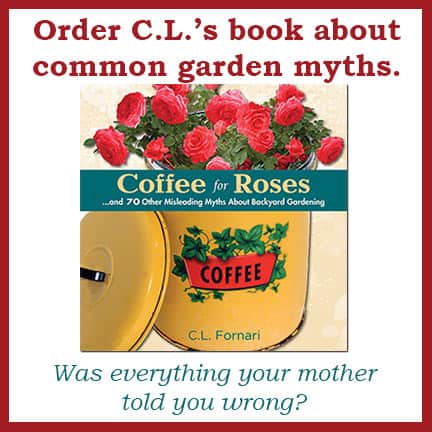Peony growers are very familiar with grow-through supports but there’s only one problem with these: the plants have to grow through them. Most of us aren’t thinking about supporting heavy peony buds when the plants are only eight inches high, and our window of opportunity quickly passes by. So what to do if you have a peony that’s starting to fall over even before the flowers open? I hate the look of a plant that’s in bondage…and want any supports in my garden to either be ornamental or invisible. Here’s how I stake things like hydrangeas and peonies when it’s necessary. (Hints on keeping them stake free at the bottom of the post!)
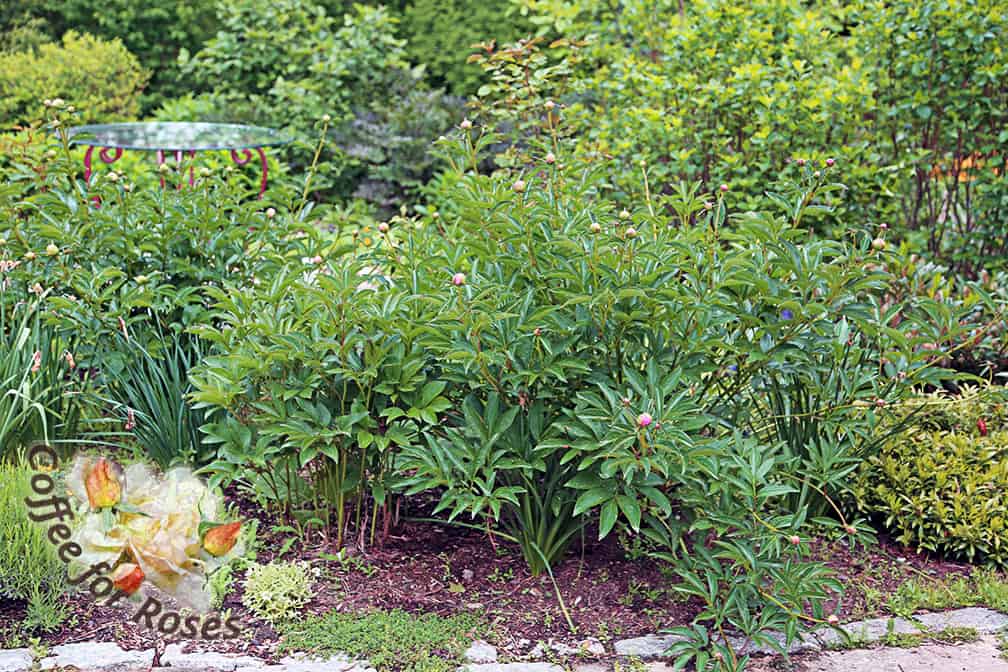
This peony has stems that fall over more quickly than others…maybe because it’s in a bit more shade and reaching for the light, or perhaps because the crown of the plant is closer to the surface. It could also be that this plant gets more fertilizer since I routinely plant annuals in this bed around these peony plants. No matter what the cause, however, this is one peony that I have to either pick the flowers as they open or provide some support to the stems.
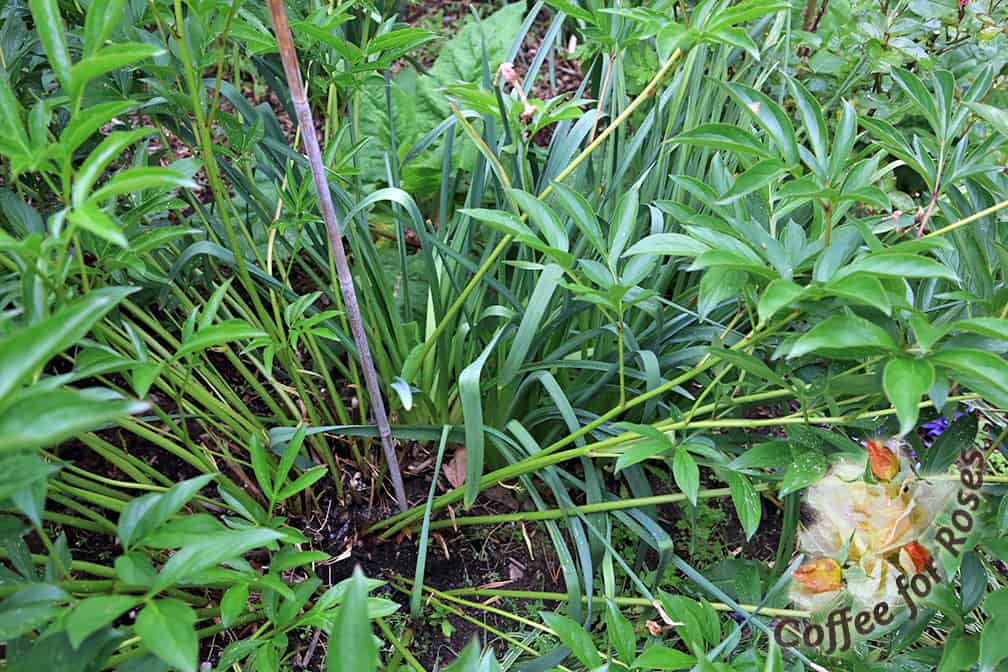
This is step one. Take a sturdy bamboo stake and poke it down at least a foot into the ground in the center of the plant or close to it. Choose a stake that won’t show above the top of the plant once it’s in the ground to a depth of a foot to eighteen inches.

Tie a string around the post.

Now one by one pull the stems up toward the stake, wrapping the string only half way around the stem and then back to the stake and around the stake before bringing the string around another stem. In other words, you don’t wrap the string all the way around the peony stem because you don’t want to choke it. This photo shows three stems being held up. I was just getting started! The string is brought out to hold as many stems as you wish, one at a time. The stems that are closest to the stake get pulled closer, while the strings supporting the outermost stems are left longer so that the plant maintains a natural form.
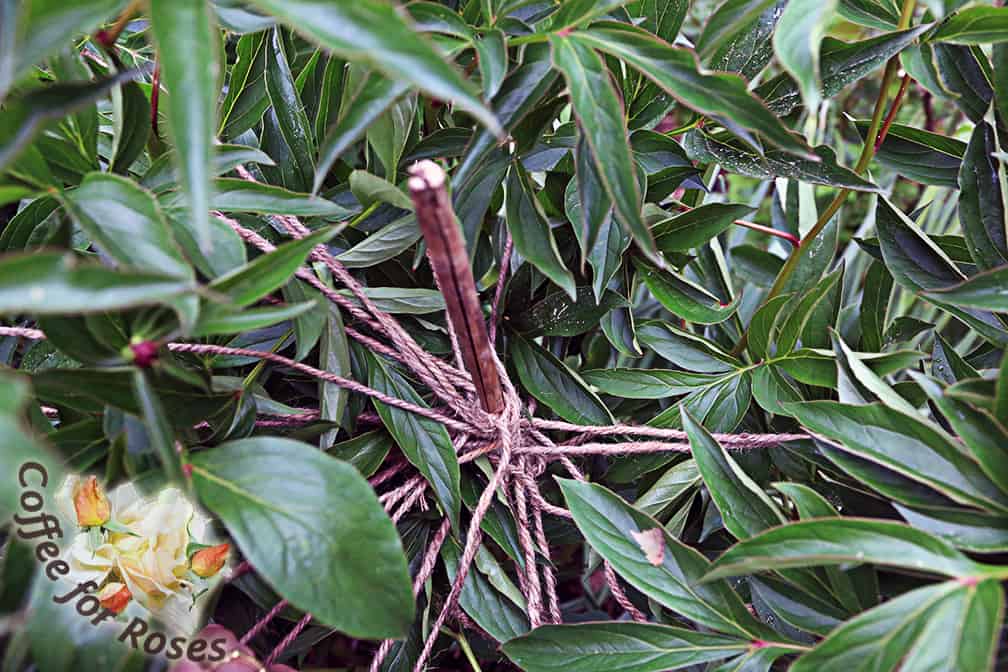
Once the leaves are fluffed out they will cover the staking. I pulled them away for this photo so you can see how the staking system looks from above once it’s done. You end up with the strings going in and out so it looks like the spokes of a wheel or umbrella.

Here is how the finished shrub looked once I fluffed the leaves. The plant looks natural, with none of the “I’ve been tied to a stake!” look that happens if you just wrapped the string around the outside of the plant.

Here’s a closeup of the supported plant. The strings are nearly invisible!
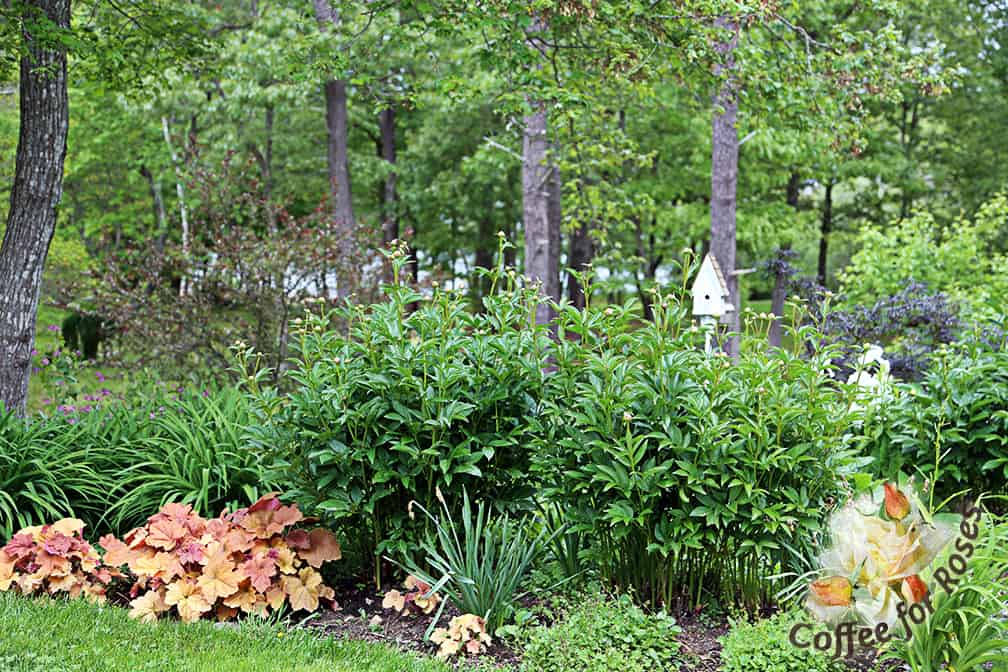
These are other peonies in another part of my garden. Like most of my plants, these aren’t supported nor will they need to be. I keep my peonies on a lean diet: a deep soaking only once a week in times of drought, and little to no fertilizer. Peonies usually get all the nutrients they need from the soil. I amend with compost and occasionally mulch, but since I don’t fertilize these plants they tend to be sturdier. Remember that excess fertilizer does NOT make plants stronger…in fact, just the opposite is usually true.



